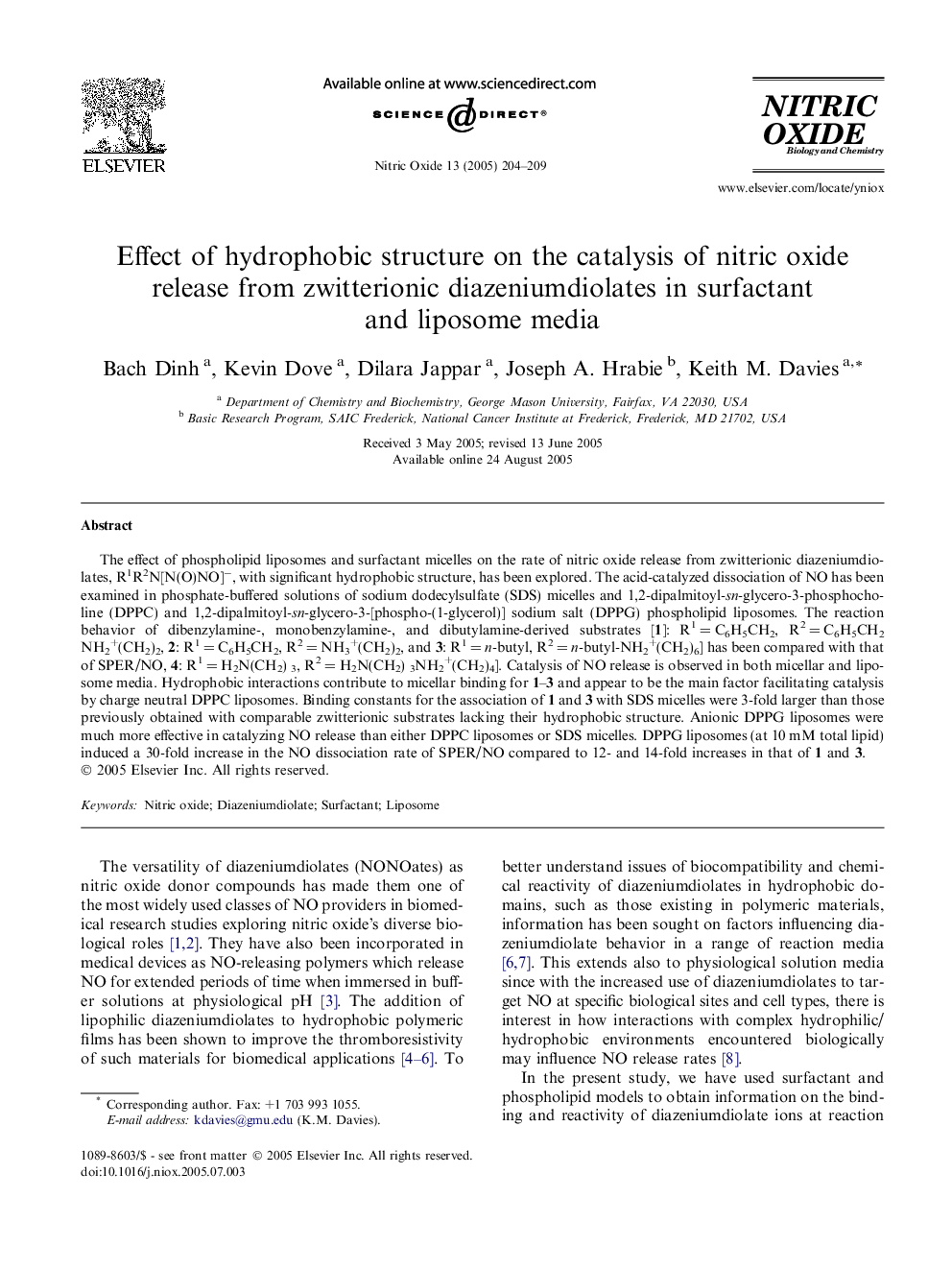| Article ID | Journal | Published Year | Pages | File Type |
|---|---|---|---|---|
| 10835281 | Nitric Oxide | 2005 | 6 Pages |
Abstract
The effect of phospholipid liposomes and surfactant micelles on the rate of nitric oxide release from zwitterionic diazeniumdiolates, R1R2N[N(O)NO]â, with significant hydrophobic structure, has been explored. The acid-catalyzed dissociation of NO has been examined in phosphate-buffered solutions of sodium dodecylsulfate (SDS) micelles and 1,2-dipalmitoyl-sn-glycero-3-phosphocholine (DPPC) and 1,2-dipalmitoyl-sn-glycero-3-[phospho-(1-glycerol)] sodium salt (DPPG) phospholipid liposomes. The reaction behavior of dibenzylamine-, monobenzylamine-, and dibutylamine-derived substrates [1]: R1Â =Â C6H5CH2, R2Â =Â C6H5CH2 NH2+(CH2)2, 2: R1Â =Â C6H5CH2, R2Â =Â NH3+(CH2)2, and 3: R1Â =Â n-butyl, R2Â =Â n-butyl-NH2+(CH2)6] has been compared with that of SPER/NO, 4: R1Â =Â H2N(CH2) 3, R2Â =Â H2N(CH2) 3NH2+(CH2)4]. Catalysis of NO release is observed in both micellar and liposome media. Hydrophobic interactions contribute to micellar binding for 1-3 and appear to be the main factor facilitating catalysis by charge neutral DPPC liposomes. Binding constants for the association of 1 and 3 with SDS micelles were 3-fold larger than those previously obtained with comparable zwitterionic substrates lacking their hydrophobic structure. Anionic DPPG liposomes were much more effective in catalyzing NO release than either DPPC liposomes or SDS micelles. DPPG liposomes (at 10Â mM total lipid) induced a 30-fold increase in the NO dissociation rate of SPER/NO compared to 12- and 14-fold increases in that of 1 and 3.
Related Topics
Life Sciences
Biochemistry, Genetics and Molecular Biology
Biochemistry
Authors
Bach Dinh, Kevin Dove, Dilara Jappar, Joseph A. Hrabie, Keith M. Davies,
